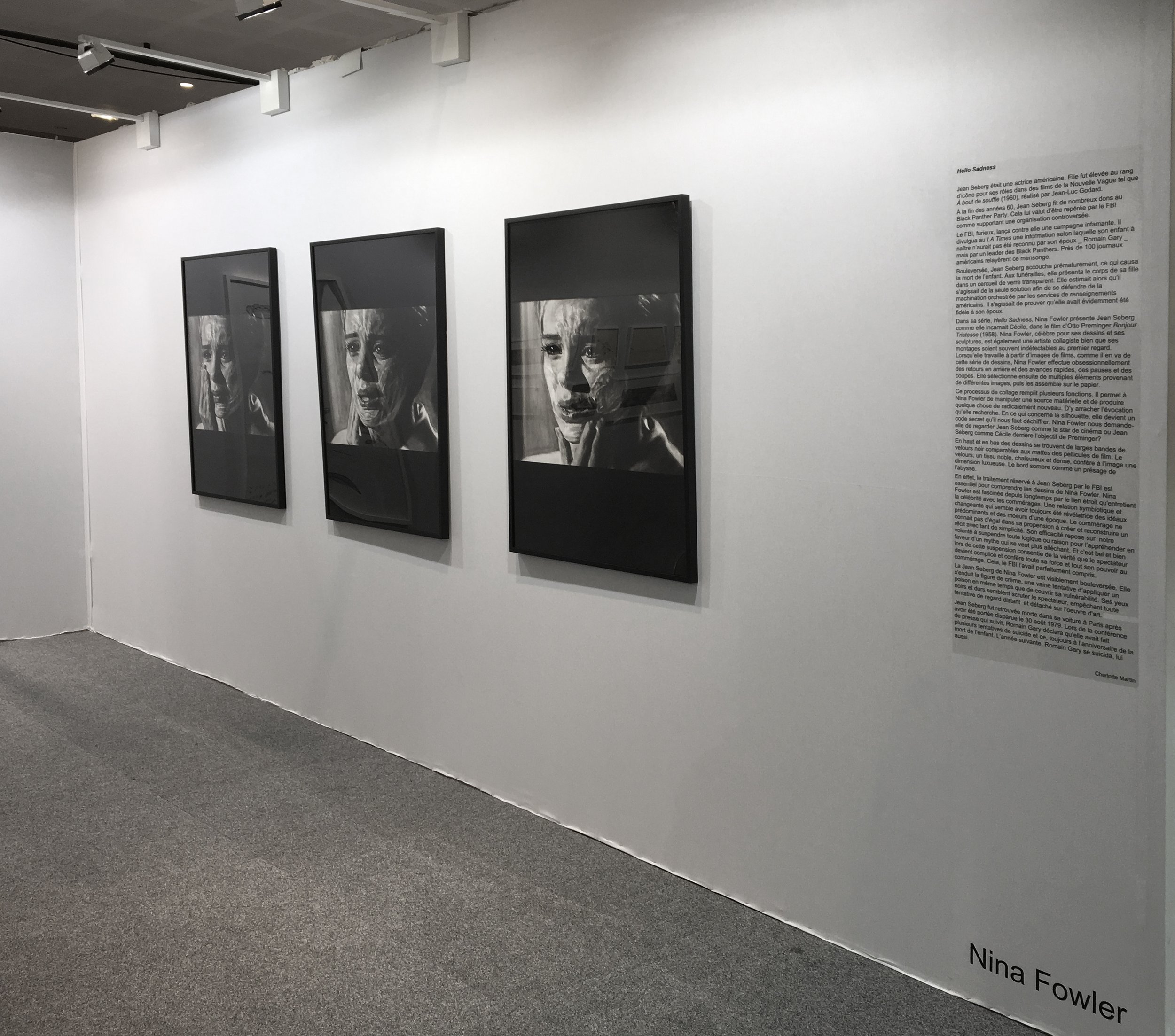HELLO SADNESS
GALERIE DUKAN - DRAWING NOW, PARIS, 2017
March 23rd – 26th, 2017
-
“ Papa’s said to be a rather prominent Black Panther”
So ran a sentence in the Los Angeles Times gossip column in 1970
“cause her embarrassment and cheapen her image”
Was the stated FBI aim.
Jean Seberg was an American actress who became iconic for her roles in French New Wave Films such as Jean-Luc Godards’s Breathless (1960).
Seberg made several donations to the Black Panther Party in the late 60’s, which brought her to the attention of the FBI as a supporter of a ‘subversive’ organisation. The angered FBI launched a smear campaign against her by feeding stories to the LA Times that her unborn child was not fathered by her husband, Romain Gary, but instead by a leading Black Panther. More than 100 US newspapers ran with the planted gossip.
Distraught, Seberg went into premature labour causing her child to die. At the funeral she presented the body of her daughter in an open casket. Seberg felt it was the only option available to fight back against the machine of the USA intelligence services and prove that she had in fact been faithful to her husband.
In Fowler’s series ‘Hello Sadness’ she depicts Seberg as Cecille in Otto Preminger’s film Bonjour Tristesse (1958). Fowler, known for her drawings and sculpture, is also a collage maker, although her montage is undetectable at first glance. When working from film stills, as in this series of drawings, Fowler obsessively rewinds, forwards, pauses and cuts. Lifting different details from different stills, stitching them together on her paper. This process of collage performs several functions, it enables Fowler to manipulate the source material into something new, so she can wrestle from it the evocation she is seeking. It also turns the figure into a cipher once removed. Is Fowler asking us to look at Seberg, the film-star or Seberg through Preminger’s lens as Cecille?
At the top and bottom of the drawings are large strips of black velvet, akin to the ‘mattes’ on a cinema reel. Velvet, the most luxurious of fabrics, it is hot and dense, offering an extreme luxury with a dark edge, a hint of the abyss.
The FBI’s treatment of Seberg is integral to an understanding of Fowler’s drawings here. Fowler has long been fascinated by the relationship between celebrity and ‘gossip’, a symbiotic and evolving relationship that always seems to represent the prevailing ideals and morals of the day. Gossip is unrivalled in its ability to create and reframe a narrative so simply. The effectiveness of gossip relies on our willingness to suspend logic and reason, in favour of a tantalising myth. This willing suspension of truth by the spectator is what makes gossip so powerful and all of us complicit in its power. A power the FBI understood totally.
Fowler’s Seberg is visibly distraught, smearing cream onto her face, a futile attempt to apply a veneer and conceal her vulnerability. Her fraught black eyes seem to pierce the viewer, interrupting our attempt at a detached appreciation of a work of art. Instead, they seem to plead with us to not engage with the smears, rumours, half-truths and defamations of gossip and simultaneously accuse us for our inevitable collusion, holding us accountable for our collective cultural pact with gossip.
Seberg was found dead in her car in Paris after disappearing on 30 August 1979. In the press conference that followed Gary stated that Seberg had frequently attempted suicide on the anniversary of their child’s death. The following year Romain Gary committed suicide.

